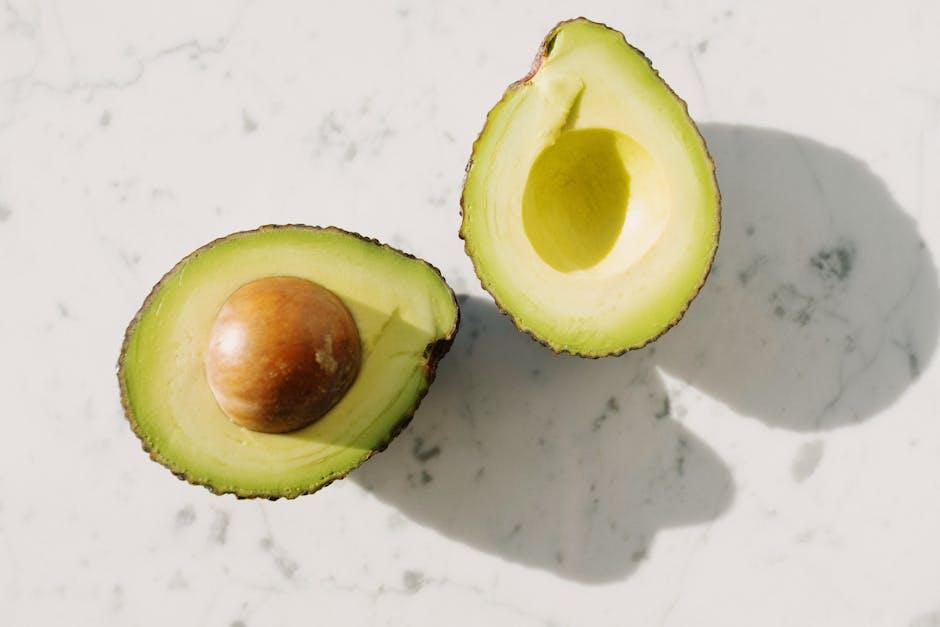Stepping into the world of keto can feel like navigating a maze of fresh produce, protein-packed aisles, and hidden carbs. For beginners, grocery shopping transforms from a routine chore into a strategic mission, where every item placed in the cart counts toward staying in ketosis. Whether you’re eyeing those vibrant avocados or scanning labels for sugar content, knowing how to shop smartly can make all the difference. This guide will walk you through essential tips to streamline your keto grocery runs, helping you build a pantry that fuels your low-carb lifestyle with ease and confidence.
Table of Contents
- Choosing Keto-Friendly Staples for Your Pantry
- Navigating the Produce Aisle with Low-Carb Picks
- Selecting Quality Proteins for Optimal Ketosis
- Smart Snacking Solutions to Keep You on Track
- Decoding Labels to Avoid Hidden Carbs
- Q&A
- Concluding Remarks

Choosing Keto-Friendly Staples for Your Pantry
Stocking your pantry with keto-friendly staples is a game changer when it comes to staying on track. Focus on ingredients that are low in carbs but rich in fats to fuel your body effectively. Think nuts, seeds, and oils—these components are versatile and easy to incorporate into various recipes. Coconut oil and avocado oil, for instance, not only add flavor but also provide healthy fats that support ketosis. Don’t forget about shelf-stable items like almond flour or flaxseed meal, which are perfect alternatives for traditional baking and thickening sauces.
Creating a well-organized pantry will help you resist temptation when cravings strike. Below is a quick-reference list of keto pantry essentials to keep close at hand:
- Oils and Fats: Extra virgin olive oil, coconut oil, avocado oil
- Nuts and Seeds: Almonds, pecans, chia seeds, sunflower seeds
- Flours and Thickeners: Almond flour, coconut flour, psyllium husk
- Condiments and Spices: Mustard, hot sauce, garlic powder, cinnamon
- Convenience Items: Canned tuna, olives, pickles (sugar-free)
Navigating the Produce Aisle with Low-Carb Picks
When selecting produce for a low-carb lifestyle, focus on vibrant, nutrient-dense options that keep your carb intake minimal while enhancing your meals with flavor and texture. Leafy greens like spinach, kale, and arugula are excellent staples, offering versatility for salads, wraps, and sautés. Meanwhile, cruciferous vegetables such as broccoli, cauliflower, and Brussels sprouts bring volume and fiber without tipping your carb meter. Be mindful of some root vegetables—although tempting, carrots and beets can add more carbs than desired. Instead, opt for zucchini, cucumbers, and bell peppers, which add crunch and color with fewer carbs.
To help you easily identify keto-friendly produce, here’s a quick guide:
| Low-Carb Veggies | Carbs (per 100g) | Suggested Use |
|---|---|---|
| Spinach | 1.4g | Salads, smoothies |
| Cauliflower | 5g | Rice substitute, mash |
| Zucchini | 3g | Noodles, grilling |
| Bell Peppers | 6g | Snacking, stuffing |
| Broccoli | 7g | Steaming, roasting |
- Choose fresh, in-season produce for optimal flavor and nutrient content.
- Read labels carefully especially on packaged veggies to avoid hidden carbs.
- Experiment with herbs and spices to elevate simple veggie dishes without adding carbs.
Selecting Quality Proteins for Optimal Ketosis
Choosing the right proteins is crucial when aiming to maintain a state of ketosis without sacrificing muscle health or energy levels. Focus on high-quality, nutrient-dense sources that support your body’s fat-burning capabilities. Opt for grass-fed beef, wild-caught fish, and free-range poultry, as they provide a richer profile of omega-3 fatty acids and essential vitamins compared to conventional options. Additionally, incorporating moderate amounts of eggs and dairy like full-fat cheese or Greek yogurt can add variety without kicking you out of ketosis.
Keep an eye on protein portions as excessive intake can convert protein into glucose, potentially disrupting ketosis. Here’s a quick reference to help balance your choices effectively:
| Protein Source | Ketosis-Friendly? | Recommended Serving |
|---|---|---|
| Grass-Fed Beef | Yes | 3-4 oz per meal |
| Wild-Caught Salmon | Yes | 3-5 oz per meal |
| Free-Range Chicken | Yes | 3-4 oz per meal |
| Full-Fat Greek Yogurt | Moderate | ½ cup per serving |
| Processed Meats | No | Limit or avoid |
- Avoid processed meats that often contain hidden sugars and carbs.
- Check labels for added preservatives and fillers that can impact ketosis.
- Prioritize freshness—fresh cuts tend to contain fewer additives.
Smart Snacking Solutions to Keep You on Track
When the mid-afternoon cravings hit, reaching for keto-friendly snacks can make all the difference between sticking to your goals and slipping off track. Opt for nutrient-dense, low-carb options like cheese crisps, mixed nuts, or celery sticks with almond butter. These choices not only keep your energy levels stable but also provide satisfying textures and flavors, helping you avoid carb-heavy temptations. Preparing snack packs in advance can transform your grocery haul into a well-organized arsenal against hunger pangs.
- Olives and pickles for a savory bite
- Boiled eggs for protein-packed snacking
- Avocado slices sprinkled with chili powder
- Pork rinds as a crunchy alternative to chips
Consider incorporating some ready-to-eat options that seamlessly blend into your busy lifestyle. To simplify your choices, here’s a quick reference guide highlighting popular keto snacks, complete with their typical carb counts:
| Snack | Approx. Net Carbs (per serving) | Why It Works |
|---|---|---|
| Macadamia Nuts | 2g | High in healthy fats, low in carbs |
| String Cheese | 1g | Portable and protein-rich |
| Hard-Boiled Egg | 1g | Compact, filling, and nutrient-dense |
| Beef Jerky (Unsweetened) | 3g | Great protein boost without added sugars |
Decoding Labels to Avoid Hidden Carbs
When examining nutrition labels, it’s essential to scrutinize every detail to spot those sneaky carbs lurking under unfamiliar names. Ingredients like maltodextrin, dextrose, and cane sugar may sound harmless but can quickly disrupt your ketosis. Watch out for serving sizes too—sometimes a label’s carb count looks low until you realize multiple servings are included. To simplify the process, keep a mental checklist or even a printed cheat sheet of common hidden carb ingredients. This strategy empowers you to make informed choices without second-guessing.
To make label decoding even easier, here’s a quick reference table of common hidden carbs and keto-friendly alternatives:
| Ingredient to Avoid | Keto-Friendly Replacement |
|---|---|
| Maltodextrin | Stevia or Monk Fruit |
| Dextrose | Erythritol |
| Cane Sugar | Allulose |
| High-Fructose Corn Syrup | Raw Nuts or Seeds |
With these tools in hand, you can confidently navigate the grocery aisles, avoiding hidden carbs that might sabotage your keto goals. Learning to read between the lines is the key to success on your low-carb journey.
Q&A
Q&A: Grocery Shopping Tips for Keto Beginners
Q1: What should I focus on when making a keto grocery list?
A1: Prioritize whole, low-carb foods like leafy greens, avocados, nuts, eggs, and quality meats. Think colorful veggies and healthy fats—these are the stars of the keto show. Avoid grains, sugary snacks, and starchy vegetables to keep your carb count in check.
Q2: How can I avoid carbs hidden in processed foods?
A2: Reading labels is your best defense. Look out for sugars, maltodextrin, and anything ending with “-ose” (like fructose or glucose). Also, beware of sauces and dressings—they can sneak in extra carbs and sugars, so opt for homemade or keto-friendly versions.
Q3: Are there keto-friendly substitutes for common high-carb staples?
A3: Absolutely! Instead of bread, try lettuce wraps or cloud bread. Cauliflower rice can replace regular rice, and zucchini noodles can take the place of pasta. These swaps help satisfy cravings without breaking ketosis.
Q4: How do I plan my groceries to avoid impulse buys?
A4: Go in with a clear list and a game plan. Stick to the perimeter of the store where fresh produce, meats, and dairy are usually found, and steer clear of the middle aisles dominated by processed temptations. Shopping with a full stomach never hurts either.
Q5: What are some easy keto snacks to grab while shopping?
A5: Nuts, cheese sticks, olives, and hard-boiled eggs make for convenient, keto-friendly snacks. Also, look for pork rinds or seaweed snacks as crunchy, carb-free options that can satisfy that munchies craving.
Q6: Can I enjoy fruits on keto?
A6: Some fruits are keto-friendly in small amounts—berries like strawberries, raspberries, and blackberries fit the bill due to their lower sugar content. However, most fruits should be eaten sparingly to maintain your carb limit.
Q7: How do I keep my grocery budget keto-friendly?
A7: Planning meals ahead and buying in bulk when possible can save money. Frozen veggies and meats are often cheaper and just as nutritious as fresh. Also, seasonal produce tends to be more affordable and flavorful.
Q8: What’s a rookie mistake to avoid in keto grocery shopping?
A8: Overbuying carb-heavy items “just in case” can sabotage your progress. Another common slip is neglecting to buy enough fats and proteins, which are essential for keto energy and satiety. Stay focused on your goals to keep your cart—and your diet—on track.
With these tips in hand, your next trip to the grocery store can be a confident step toward mastering the keto lifestyle!
Concluding Remarks
Embarking on a keto journey doesn’t have to mean wandering the grocery aisles aimlessly. With these simple shopping tips in hand, you’re better equipped to navigate the keto terrain confidently and efficiently. Remember, the key is to focus on whole, nutrient-dense foods that align with your low-carb goals while keeping your meals satisfying and diverse. As you sharpen your grocery game, the keto lifestyle transforms from a daunting challenge into a seamless, sustainable habit—one delicious aisle at a time. Happy shopping, and here’s to your healthful, flavorful adventure ahead!

